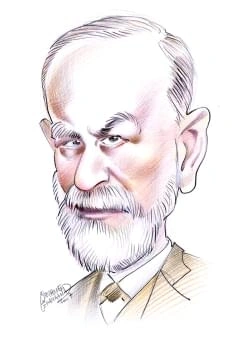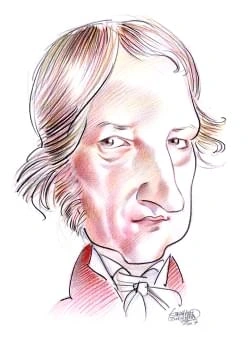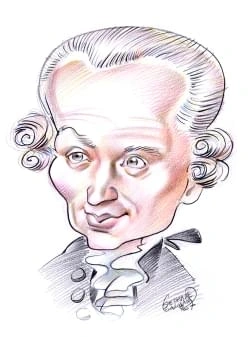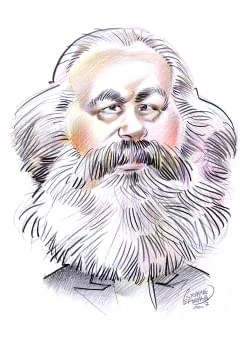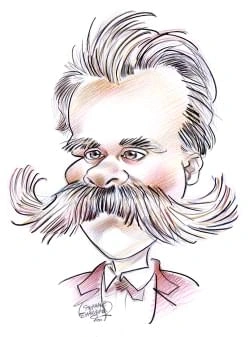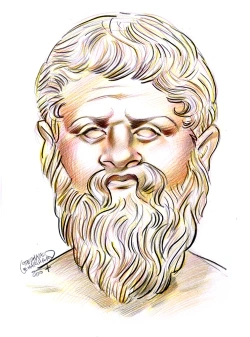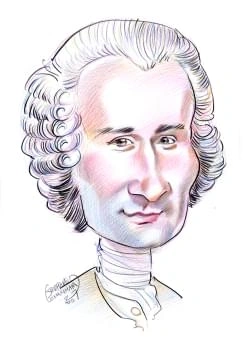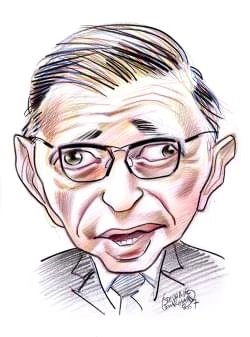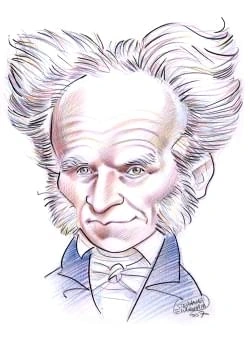319 résultats pour "economy"
-
Liberia - country.
West Atlantic, or Kwa linguistic groups. D Education Education is free and compulsory for children between the ages of 6 and 15. However, a scarcity of educational facilities means that few Liberians progress beyondprimary school. Almost all children of primary school-age attend school, but the figure drops to 23 percent (1999–2000) for secondary school-age children. Just 60percent of the population was literate in 2005. Higher education is provided by the University of Liberia (1862), in Monro...
-
Kyrgyzstan - country.
are Bishkek, the capital, located on the Chu River in the far north; and Osh, located in the Fergana Valley. A Ethnic Groups Ethnic Kyrgyz make up about 65 percent of the population of Kyrgyzstan. Uzbeks, who live primarily in the Fergana Valley, constitute about 14 percent of thepopulation. Russians, who live principally in Bishkek and other industrial centers, make up about 13 percent of the population. Other ethnic groups include Hui (ChineseMuslims, also known as Dungans), Ukrainians, Uygur...
-
Qing Dynasty - History.
The Manchus also dealt with the problem of Russian expansion into northeastern Asia. In 1689 the Treaty of Nerchinsk was signed by an envoy from the Manchu courtand a Russian representing Peter the Great. The treaty, the first between China and a Western country, established territorial boundaries and defined rules ofcommerce for the two powers. Through the mid-18th century, the Manchus continued to consolidate their power. In 1720 the Qing ruler sent forces to fight the Mongols in Tibet and the...
-
White Paper: SMEs in Morocco
In addition to these structural weaknesses of the economic fabric, there is the predominance of the informal sector. If there are no figures on the portion of black economy in Morocco, but it is still a fact that nobody can deny: a large number of businesses, particularly small ones (the majority of the economic fabric) are only partially applying government regulation and particularly fiscal. This part of the informal activity is not i...
-
SMEs in Morocco
In addition to these structural weaknesses of the economic fabric, there is the predominance of the informal sector. If there are no figures on the portion of black economy in Morocco, but it is still a fact that nobody can deny: a large number of businesses, particularly small ones (the majority of the economic fabric) are only partially applying government regulation and particularly fiscal. This part of the informal activity is not i...
-
Portland - geography.
Garden arena, which opened in 1995. In 2000 the Portland Fire, an expansion Women's National Basketball Association team, began play in the Rose Garden as well. VI ECONOMY Portland enjoys a diversified economy. Major manufactured products include paper, transportation equipment, metal products, sportswear, and electronic componentsand equipment. Major corporations headquartered in the metropolitan region include Nike, a leader in the manufacture of sports footwear, in Beaverton; Louisiana-Paci...
-
Cincinnati - geography.
and managed the Reds. The University of Cincinnati men’s basketball team enjoyed considerable success in the 1990s. IV ECONOMY Cincinnati, from its earliest beginnings, has functioned as a major port on the Ohio River. Distribution of raw materials as well as manufactured goods is one of the city’schief economic activities. Although Cincinnati remains one of the world’s leading centers for the distribution of bituminous (soft) coal, this trade is gradually declining. Coal from Kentucky and W...
-
Ancient Greece - history.
Palace of KnossosThe ancient city of Knossos was a center of the Minoan civilization, an advanced society on Crete named after Minos, a legendaryCretan king. Skilled in such fields as engineering and architecture, the Minoans constructed the palace at Knossos in 1700 bc. Aserious fire at least three centuries later caused the collapse of the palace and foreshadowed the subsequent decline of the city.Wolfgang Kaehler Settlers had begun sailing from Asia Minor to Crete about 6000 BC because the i...
-
-
Côte d'Ivoire - country.
D Culture Traditional artistic expressions in Côte d’Ivoire include woodcarvings (particularly masks), decorative fabrics, and acrobatic dancing. Urban populations have beengreatly influenced by French culture. The French language is almost universally used in the written literature of Côte d’Ivoire, to the exclusion of the African languages. IV ECONOMY About 60 percent of Côte d’Ivoire’s total labor force is employed in farming and forestry. Government efforts to avoid dependence on a small...
-
Belize - country.
Education is compulsory for children between the ages of 5 and 14. Attendance at primary schools was nearly universal in 2002–2003, but only 78 percent of children ofsecondary school age were enrolled in school. Higher education is available at colleges in Belize City and Corozal. The literacy rate of 93 percent is one of the highest inLatin America. C Government Belize is governed under a constitution that became effective at independence in 1981. Belize recognizes the British monarch as its o...
-
Botswana - country.
at birth was 50.2 years, also a significant improvement. The urban population of Botswana has increased rapidly, from 18 percent of the total in 1981 to 51 percent in 2003. Gaborone, the capital, is the largest city and mainbusiness center. Other business centers are Francistown, Selebi-Pikwe, Molepolole, Kanye, and Serowe. Botswana received its name from the country’s principal ethnic group, the Tswana. Other ethnic groups include the Kgalagadi, Kalanga, and Basarwa. There are also asmall numbe...
-
The Gambia - country.
The population of The Gambia (2008 estimate) is 1,735,464, making it one of the least populous countries of Africa. Still, the country has a fairly high overall populationdensity of 174 persons per sq km (449 per sq mi), and the population is increasing at a rate of 2.7 percent a year. Banjul, formerly called Bathurst, is the capital andonly seaport. The largest city is Serrekunda, a transportation hub and commercial center. B Religion and Language The great majority of the people of The Gambia...
-
Warsaw - geography.
VI ECONOMY In addition to serving as Poland's leading administrative center, Warsaw is also a center for science, research, and higher education. Since World War II the city'sindustrial base has been developed, with diverse plants producing steel, cars, tractors, and consumer electronics. Warsaw is the second most important industrial regionin Poland (after Katowice in the south). Warsaw, more than anywhere else in the country, has benefited from the boom in construction and commerce that foll...
-
San Antonio (city, Texas) - geography.
The SBC Center is the home venue for the San Antonio Spurs of the National Basketball Association (NBA) and the San Antonio Silver Stars of the Women's NationalBasketball Association (WNBA). The dome also serves as the site for the Alamo Bowl, an annual post-season college football game. Large themed amusement parks inthe San Antonio area are Fiesta Texas and Sea World of Texas. San Antonio’s major annual event is the Fiesta, a ten-day celebration in late April with carnivals, ethnic feasts, art...
-
Cyprus - country.
40,000 cubic meters (1.4 million cubic feet) of salt water into fresh water per day, opened at Dhekelia in 1997, and a second larger plant opened at Larnaca in 2001. III PEOPLE OF CYPRUS The combined population of the Greek and Turkish sectors (2008 estimate) is 792,604. The overall population density is 86 persons per sq km (222 per sq mi). About69 percent of the island’s inhabitants live in urban areas. Greek-speaking Cypriots make up approximately 85 percent of the population. About 12 perc...
-
São Paulo (city) - geography.
universities include the State University Paulista Júlio de Mesquita Filho (1976), and the even larger University of São Paulo (1934), which incorporates the city’s famousand influential Faculty of Law. Important private universities are Mackenzie University, originally founded by Presbyterian missionaries from the United States (1870);the Paulista University (1972); the Pontifical Catholic University of São Paulo (1946); and the University São Judas Tadeu (1971). The city is home to the São Pau...
-
-
Angola (country) - country.
Portugal in 1975, it had approximately 400,000 Portuguese settlers. The vast majority of the Portuguese community has since departed for Portugal. A Population Characteristics The 2008 estimated population of Angola, including Cabinda, was 12,531,357. The population distribution, however, was uneven, with about 70 percent of thepopulation concentrated in the north and along the coast. The rate of population increase was 2.1 percent annually in 2008. The population is overwhelmingly rural; only3...
-
Capitalism.
Physiocracy is the term applied to a school of economic thought that suggested the existence of a natural order in economics, one that does not require direction from the state for people to be prosperous. The leader of the physiocrats, the economist François Quesnay, set forth the basic principles in his Tableau économique (1758), in which he traced the flow of money and goods through the economy. Simply put, this flow was seen to be both circular and self-sustaining. More important, however...
-
Democratic Party.
At the beginning of the 20th century the Democrats’ minority position among voters remained central to their existence. The Progressive split in Republican rankshelped elect Woodrow Wilson twice, but the entry of the United States into World War I ended that. The war, popular at first, backfired against the Wilsonadministration when large numbers of German Americans and Irish Americans protested with their votes against U.S. involvement on England’s side. The result wasanother Republican landsli...
-
Bahrain - country.
A Religion Almost all Bahrainis and the majority of nonnatives are followers of Islam (Muslims). About 70 percent of all native Bahrainis belong to the Shia branch of Islam, whilethe remainder, including the ruling al-Khalifa clan, are adherents of the Sunni branch. Non-Muslims, including Hindus, Buddhists, Christians, and Jews, account for 15percent of the total population. High unemployment among the Shia population has caused considerable discontent on the part of this group toward the Sunni...
-
Turkmenistan - country.
A Ethnic Groups With Turkmens constituting 77 percent of the population, Turkmenistan is the most ethnically homogeneous of the Central Asian republics. Uzbeks make up the largestminority group, with about 9 percent of the population. Other ethnic groups include Russians, Kazakhs, Tatars, Ukrainians, Azeris (ethnic Azerbaijanis), Armenians, andBaluch. In 1993 a bilateral treaty between Turkmenistan and Russia granted dual citizenship to Russians in the republic. At the 1995 census Russians cons...
-
Haiti - country.
Haitian Creole and French are the official languages of Haiti. Haitian Creole, a French-based Creole with influences from West African languages, was made an officiallanguage under the 1987 constitution. It is the mother tongue for nearly the entire population of Haiti and the language of instruction in schools. French is spokenmainly as a second language by a small section of the population. B Religion About 80 percent of Haiti’s people are nominal Roman Catholics, many of them combining an Af...
-
Dallas (Texas) - geography.
VI RECREATION Dallas contains more than 400 parks that cover a total of about 20,000 hectares (about 50,000 acres). Notable parks include Marsalis Park, which contains the DallasZoo, and the parks surrounding White Rock Lake, Bachman Lake, and Lake Cliff. City-owned greenbelts parallel White Rock Creek, Turtle Creek, and the Trinity River.Fair Park contains a number of museums, the city aquarium, and the Cotton Bowl stadium (the site of the annual Cotton Bowl college football game), as well as...
-
Economics.
Malthus, nature's check was “positive”: “The power of population is so superior to the power of the earth to produce subsistence for man, that premature death must insome shape or other visit the human race.” The shapes it took included war, epidemics, pestilence and plague, human vices, and famine, all combining to level theworld's population with the world's food supply. The only escape from population pressure and the horrors of the positive check was in voluntary limitation of population, no...
-
-
Burundi - country.
D Way of Life Most Burundians live in self-contained compounds of small round grass huts scattered over the country’s many hills. The rugo , the traditional Tutsi hut, is divided into sections and surrounded by an enclosure and cattle corrals. Families farm scattered plots of land on different soils at different altitudes to minimize crop failure. Thefloors of valleys are avoided due to higher temperatures and tsetse fly infestation. Social roles are largely determined by ethnicity, with the T...
-
Ethiopia - country.
constitute about 6 percent of the population. The Somali, who live in the east and southeast, notably in the Ogadēn region, are about equal in number to the Shangalla.The Denakil inhabit the semidesert plains east of the highlands. The nonindigenous population includes Yemenis, Indians, Armenians, and Greeks. B Political Divisions Ethiopia is divided into nine regions composed of specific ethnic groups. The regions, which have a significant degree of autonomy, are Tigray; Afar; Amhara; Oromia;S...
-
Jordan (country) - country.
whom belong to the Greek Orthodox Church, make up about 4 percent of the population. Islam is the state religion and Arabic the official language. C Education Jordan has made significant strides in education in recent decades, despite the influx of hundreds of thousands of refugees and the very large share of the nationalbudget assigned to the armed forces. Public education is free and compulsory between the ages of 6 and 15. At the secondary level, about 85 percent of the malechildren and 87 p...
-
Jean Chrétien.
In 1969, when Chrétien introduced policy proposals based on this principle, indigenous peoples reacted with such hostility that he ultimately had to withdraw theproposals. Despite this and other clashes with indigenous leaders, Chrétien continued to work at improving the government relations with them. By the time he left theDepartment of Indian and Northern Affairs in 1974, he had earned their respect and appreciation for his efforts. Following the 1974 election, Trudeau appointed Chrétien pres...
-
Jean Chrétien - Canadian History.
In 1969, when Chrétien introduced policy proposals based on this principle, indigenous peoples reacted with such hostility that he ultimately had to withdraw theproposals. Despite this and other clashes with indigenous leaders, Chrétien continued to work at improving the government relations with them. By the time he left theDepartment of Indian and Northern Affairs in 1974, he had earned their respect and appreciation for his efforts. Following the 1974 election, Trudeau appointed Chrétien pres...
-
History of United States Business.
their lives. But the rewards were worth it; a few lucrative voyages and a merchant could buy a townhouse, a carriage, perhaps a summer retreat. The merchant couldclimb the social ladder and circulate among the powerful in this highly materialistic society. This prospect of riches and the honor that accompanied them made Americancolonists willing to engage in highly speculative enterprises, such as shipping flour to the West Indies or importing goods from England by the thousands without beingcer...
-
New Brunswick - Geography.
Grand Lake, the largest lake in New Brunswick, is in the lowlands, east of Fredericton. Most other lakes are located in the northern and southwestern parts of NewBrunswick. D Climate New Brunswick has a continental climate that is moderated by maritime influences in the coastal areas. As a result, coastal regions are slightly warmer in the winter andslightly cooler in the summer than are interior regions. Annual temperature variations are large, with the January mean usually at least 25 to 28°C...
-
New Brunswick - Canadian History.
Grand Lake, the largest lake in New Brunswick, is in the lowlands, east of Fredericton. Most other lakes are located in the northern and southwestern parts of NewBrunswick. D Climate New Brunswick has a continental climate that is moderated by maritime influences in the coastal areas. As a result, coastal regions are slightly warmer in the winter andslightly cooler in the summer than are interior regions. Annual temperature variations are large, with the January mean usually at least 25 to 28°C...
-
-
Industrial Revolution
I
INTRODUCTION
Industrial Revolution, widespread replacement of manual labor by machines that began in Britain in the 18th century and is still continuing in some parts of the world.
The most important advance in iron production occurred in 1784 when Englishman Henry Cort invented new techniques for rolling raw iron, a finishing process thatshapes iron into the desired size and form. These advances in metalworking were an important part of industrialization. They enabled iron, which was relativelyinexpensive and abundant, to be used in many new ways, such as building heavy machinery. Iron was well suited for heavy machinery because of its strength anddurability. Because of t...
-
Industrial Revolution .
The most important advance in iron production occurred in 1784 when Englishman Henry Cort invented new techniques for rolling raw iron, a finishing process thatshapes iron into the desired size and form. These advances in metalworking were an important part of industrialization. They enabled iron, which was relativelyinexpensive and abundant, to be used in many new ways, such as building heavy machinery. Iron was well suited for heavy machinery because of its strength anddurability. Because of t...
-
Israel (country) - country.
harbor in the northern part of the country, and Ashdod, an artificial deepwater port to the south, serve as the main seaports on the Mediterranean. The port of Elat onthe Gulf of Aqaba provides Israel’s only access to the Red Sea, making it extremely important to the country’s shipping interests. D Natural Resources Although much of Israel’s desert regions contain poor soils, the northern Negev, the coastal plains, and the interior valleys provide patches of productive soils. Anestimated 18 per...
-
Russian Revolutions of 1917 (Histoire) .
as Marxists. They believed that the working class—with its struggles to organize trade unions and to bring about political reforms of benefit to the majority ofpeople—would become the primary force for revolutionary change. The Russian Marxists formed the Russian Social Democratic Labor Party (RSDLP) in 1898. By 1903,however, the RSDLP had split into two factions. The faction called the Bolsheviks (from the Russian word for “majority”), led by Vladimir Ilich Lenin, favored a more centralized a...
-
Saskatchewan (province) - Geography.
The length of the frost-free season varies within the province. In the southwest, particularly in the valley lands along the South Saskatchewan River, the frost-freeperiod ranges from 150 to 160 days. Regina enjoys about 123 frost-free days, and Saskatoon has about 111. The far north has only from 85 to 95 frost-free days. One important characteristic of Saskatchewan’s climate is the great variability in temperature and precipitation from year to year, which is often critical for agriculture.The...
-
Saskatchewan (province) - Canadian History.
The length of the frost-free season varies within the province. In the southwest, particularly in the valley lands along the South Saskatchewan River, the frost-freeperiod ranges from 150 to 160 days. Regina enjoys about 123 frost-free days, and Saskatoon has about 111. The far north has only from 85 to 95 frost-free days. One important characteristic of Saskatchewan’s climate is the great variability in temperature and precipitation from year to year, which is often critical for agriculture.The...
-
Guyana - country.
European patterns of living. People of mixed African and European ancestry form a distinct group in Guyana, maintaining closer social ties to the European communitythan to the African Guyanese community. Asians from the Indian subcontinent began to arrive in the 19th century, following the abolition of slavery in Guyana, to work as indentured and contract laborers. Theycontinued to arrive until 1917, when Britain outlawed indentured servitude. Thousands of Indians chose to remain in Guyana after...
-
Armenia (country) - country.
because of ethnic tension brought on by a secessionist conflict in Nagorno-Karabakh, a region inhabited predominantly by Armenians in western Azerbaijan. In thereverse direction, many Armenian refugees entered Armenia from Azerbaijan during the conflict. Armenia’s official state language is Armenian, an Indo-European language with no surviving close relatives. It has a unique 38-letter alphabet that dates from the early5th century. Of its many spoken dialects, the most important are Eastern or Y...
-
-
Bolivia - country.
E Plants and Animals Because of the wide variations in elevation, plant and animal species of nearly every climatic zone are found in Bolivia. A coarse grass, called ichu, grows on the largelybarren high plateau in the west. Para rubber trees, more than 2,000 species of hardwood trees, and vanilla, sarsaparilla, and saffron plants are common in the tropicalforests of the east. The llama, found chiefly on the Altiplano, is an efficient beast of burden. Alpacas and vicuñas also inhabit the platea...
-
Newfoundland and Labrador - Geography.
Precipitation averages about 1,120 mm (about 44 in) yearly in Newfoundland. In Labrador precipitation varies from about 1,020 mm (about 40 in) in the southeast toabout 510 mm (about 20 in) in the extreme north. Heavy winter snowfalls are common, especially in Newfoundland. D Plant Life About one-third of Newfoundland is forested, and most of the rest of the island is made up of barren areas of reindeer moss and lichens. The forests consist almostentirely of conifers. The most important species...
-
Newfoundland and Labrador - Canadian History.
Precipitation averages about 1,120 mm (about 44 in) yearly in Newfoundland. In Labrador precipitation varies from about 1,020 mm (about 40 in) in the southeast toabout 510 mm (about 20 in) in the extreme north. Heavy winter snowfalls are common, especially in Newfoundland. D Plant Life About one-third of Newfoundland is forested, and most of the rest of the island is made up of barren areas of reindeer moss and lichens. The forests consist almostentirely of conifers. The most important species...
-
South Dakota - geography.
C1 Temperatures Average January temperatures are everywhere less than -4° C (24° F) and decrease to less than -12° C (10° F) in some northern sections. The January temperaturesin Sioux Falls range from -16° to -4° C (3° to 24° F). Nightime lows of -29° C (-20° F) occur during most winters. July averages are in the low and middle 20°s C (lowand middle 70°s F) throughout most of the state, and are somewhat lower in the Black Hills. The average temperature range in Sioux Falls in July is 17° to 30...
-
South Dakota - USA History.
C1 Temperatures Average January temperatures are everywhere less than -4° C (24° F) and decrease to less than -12° C (10° F) in some northern sections. The January temperaturesin Sioux Falls range from -16° to -4° C (3° to 24° F). Nightime lows of -29° C (-20° F) occur during most winters. July averages are in the low and middle 20°s C (lowand middle 70°s F) throughout most of the state, and are somewhat lower in the Black Hills. The average temperature range in Sioux Falls in July is 17° to 30...
-
Ronald Reagan.
deposed shah of Iran to enter the United States for medical treatment, a group of Iranian revolutionaries stormed the U.S. Embassy in Tehrān and held 53 Americansas hostages. United States media publicized the plight of the hostages and Carter’s failure to win their release. They were eventually released in January 1981, on theday of Reagan’s inauguration. The contrast between the television personalities of the two candidates was also very important. Carter’s stiff, nervous manner had never bee...
-
Ronald Reagan - USA History.
deposed shah of Iran to enter the United States for medical treatment, a group of Iranian revolutionaries stormed the U.S. Embassy in Tehrān and held 53 Americansas hostages. United States media publicized the plight of the hostages and Carter’s failure to win their release. They were eventually released in January 1981, on theday of Reagan’s inauguration. The contrast between the television personalities of the two candidates was also very important. Carter’s stiff, nervous manner had never bee...
-
Tajikistan - country.
by more than 100 percent due to a high birth rate and improvements in medical care. During the early 1990s, however, the growth rate began to decline due to civilwar and emigration. A Ethnic Groups and Languages Tajiks constitute the largest ethnic group in Tajikistan, making up about 65 percent of the population. The peoples who live in Gorno-Badakhshan, located in the Pamirs,are classified as Tajiks, although their languages and customs are distinct. The largest minority group in the country...
-
-
New Jersey - geography.
C Soils Broadly defined, all of New Jersey’s soils are podzolic soils; that is, they are acidic and contain fairly high amounts of iron oxides. The soils in northern New Jersey areirregular in quality and contain rock fragments and small stones deposited by the continental glaciers of the last Ice Age. The soils of the inner coastal plain, unaffectedby glaciation, are the richest in the state, while those of the outer coastal plain are generally infertile. The newer soil classification system d...
-
New Jersey - USA History.
C Soils Broadly defined, all of New Jersey’s soils are podzolic soils; that is, they are acidic and contain fairly high amounts of iron oxides. The soils in northern New Jersey areirregular in quality and contain rock fragments and small stones deposited by the continental glaciers of the last Ice Age. The soils of the inner coastal plain, unaffectedby glaciation, are the richest in the state, while those of the outer coastal plain are generally infertile. The newer soil classification system d...
}})
